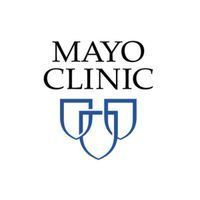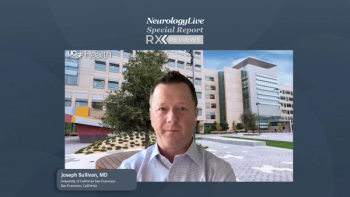
NeuroVoices: Cornelia Drees, MD, on The Advantages of Microburst Vagus Nerve Stimulation for Drug-Resistant Epilepsy

The senior associate consultant in the Department of Neurology at Mayo Clinic provided insight on an early feasibility study on the clinical impact of microburst vagus nerve stimulation in patients with drug-resistant epilepsy.
For a subset of patients with epilepsy, despite numerous antiseizure medications (ASMs), their seizures remain difficult to manage. Over the years, several new nerve stimulation approaches have been proven as effective treatments for drug-resistant epilepsy. At the
Led by Cornelia Drees, MD, this high-frequency burst is hypothesized to be more tolerable and efficacious than standard VNS. A total of 32 individuals, aged at least 12 years, had failed an average of 4-6 ASMs and were implanted with the microburst-VNS for a 12-month period. At 12 months, overall seizure severity decreased in 70% of individuals (21 of 30), improvements were observed in quality of life questionnaires, and median ASM drug load decreased by 10%.
Following the meeting, NeurologyLive® sat down with Drees to discuss the results, and the potential behind microburst-VNS. Drees, a senior associate consultant in the Department of Neurology at
NeurologyLive®: Who is the optimal candidate for this type of procedure?
Cornelia Drees, MD: The study was small, it was only 32 patients that were evaluated and essentially 20 had focal epilepsy and 12 had generalized epilepsy or generalized onset seizures which essentially broadened the population that’s approved for this device in theory. As of now, standard VNS is still only approved for focal seizures. That would be a slightly broader population, or basically, all of the population that we consider in epilepsy.
The other thing is that it seems to be well tolerated. The higher frequencies did not cause seemingly as many problems with voice changes or discomfort in the throat for several patients. That may be one advantage of using this, and it was quite efficacious in that over 60% were responders at the 12-month point, which is very high. Again, reminding you that there was no control group with standard VNS for this particular study. Over 60% had more than 80% seizure reduction. It's hard to say that anybody should be exempt from this treatment.
Now, with a small number of patients, we haven't proven the superiority, because it's not enough. One important question: is it the microburst settings that led to the treatment success or effect? Or was it the determination of microburst settings in the functional MRI? We don't know that because the study wasn't designed to answer that question. It's a big, if you will, flaw, but it's a very exciting question for the future. If an fMRI could show you the optimal settings for nerve stimulation device, could you use that in order to predict and prognosticate the best possible outcome? Which leads into the question: is functional MRI, potentially, a biomarker that shows you immediately whether this person could have an improved seizure frequency or improved seizure control?
How do we expand on this data? What unanswered questions do we still have?
The study was interrupted or cut short because of COVID, as the pandemic interfered with the regular study visits. That basically led the company to ask, are we even going to pursue this any further? We have a good product and standard VNS does work well. Is it really that different? In the future, the company will have to decide, are we going to put more money into exploring whether microburst settings are better than standard VNS settings? With a microburst and a control group that has standard VNS. And, are they going to look into: can functional MRI and certain markers in functional MRI, for example, blood flow increased to the thalamus or other areas, potentially predict or agnostic a better seizure outcome? seizure control?
Those are two different questions that I think they're currently in the midst of pondering, and both cost a lot of money. The question for me, is whether they want to put all their effort on an old horse, basically, reinventing or making it better. Could they come out with something new that could potentially push the whole topic of nerve stimulation forward. The startling thing is that the outcome of an over 60% response rate at 12 months matches other nerve stimulation devices such as RNS and DBS (deep brain stimulation). They were much lower in their responder rates, and median seizure frequency reduction rates at one year, and so it could be that you just have to use the better biomarker or a biomarker in order to get better neurostimulation results. That's where I see the future, looking into functional MRI as a potential biomarker, and then essentially [conducting] controlled studies with microburst and standard VNS, as well as subgroup analyses of microburst and standard VNS with settings being set with functional MRI.
Is this approach easy to implement? Or does it require another level of expertise that not all institutions have access to?
It is very simple, it is not an extra layer in terms of complexity, just an extra layer in terms of option. It's a software option. For example, in the study patients were implanted with a regular looking device, and can be programmed to use standard VNS settings. That is what was done after the study was closed. They were basically reprogrammed to have just standard VNS settings available to them and the physician to treat them.
After some further research, one of the considerations that the company has is to have new microbursts default settings that people would start with, as opposed to everybody running through all the settings with a patient, which would give you many permutations that you may not want to use because it would take longer time to have an optimal outcome. It would be similarly easy to program it with the understanding that it would be advisable or desirable to have a default setting that people start with and from which they can start to make alterations in order to optimize treatment, or maybe with the help of fMRI.
Transcript edited for clarity.
REFERENCE
1. Drees C, Brown MG, McDermott D, et al. Microbusrt vagus nerve stimulation: safety and efficacy outcomes. Presented at: 2023 AAN Annual Meeting; April 22-27; Boston, MA.
Newsletter
Keep your finger on the pulse of neurology—subscribe to NeurologyLive for expert interviews, new data, and breakthrough treatment updates.



























